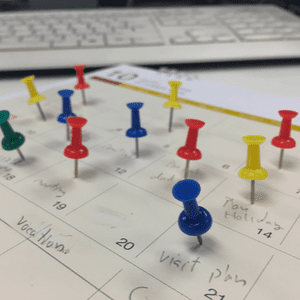
To say that the last two years have been challenging would be an understatement. For the benefits industry, it’s been particularly difficult to navigate changes to various rules and regulations.
Among their efforts to provide relief to employees during the pandemic, Congress has temporarily changed certain regulatory requirements and deadlines for the 2021-2022 period. It’s important that employers and participants alike are aware of just what those are.
Changes for 2021-2022
In a normal year, both healthcare and dependent care FSAs face “use it or lose it” provisions unless the employer has adopted Carryover or a Grace Period. As the pandemic rolled through 2020 and continued through 2021, daycare facilities closed and medical procedures were postponed. To help minimize the repercussions of funds that could not be used, significant changes were made to FSA and DCFSA accessibility, from when changes to the accounts can be made, to when claims can be submitted and unspent funds expire.
The IRS has given employers the power to carryover unlimited amounts of unused funds from the 2020 plan year to 2021, and again from the 2021 plan year to 2022. This is not automatic, but rather employers must choose to adopt the provision.
Whereas before, a Grace Period (usually 2.5 months) could be included instead of Carryover in FSA plans to help account holders spend down funds, that option has been extended for the 2020 and 2021 plan years from 2.5 months to 12 months, i.e., the end of the following plan year.
In light of these significant changes that never seem to end, it’s extremely important for employers to communicate the provisions they have chosen to adopt to their employee participants.
Engaging and Frequent Communication
We’re all dealing with a lot and processing more information than ever. While many employers provide a plethora of information during enrollment, information overload can result in this new knowledge being lost or forgotten as quickly as it comes in.
It’s important for employers to communicate benefit details in ways that resonate with employees. Baby Boomers are known to prefer print materials and in-person meetings. Generation X employees may like a range of resources. And Generations Y and Z generally seek out digital and social channels.
Regardless of the way you distribute information, it’s becoming increasingly important to keep communication channels open year-round. Add benefits reminders to pay stubs. Organize regular periodic benefit meetings, whether online or in-person. Post reminders on internal company sites, message boards, and social media groups. If your employees still have unspent funds and plenty of time left, send out periodic reminders. Share suggestions for ways to spend their funds that they may not have thought about.
The more educated and engaged employees are about their benefits, the more effectively they’ll be able to use them. And the more advantages from those benefits that they experience, the healthier and more satisfied employees will be. In turn, employers will gain from higher morale, increased productivity, and improved employee retention.